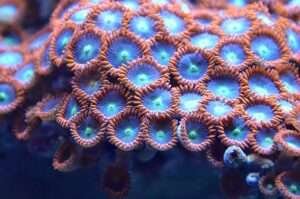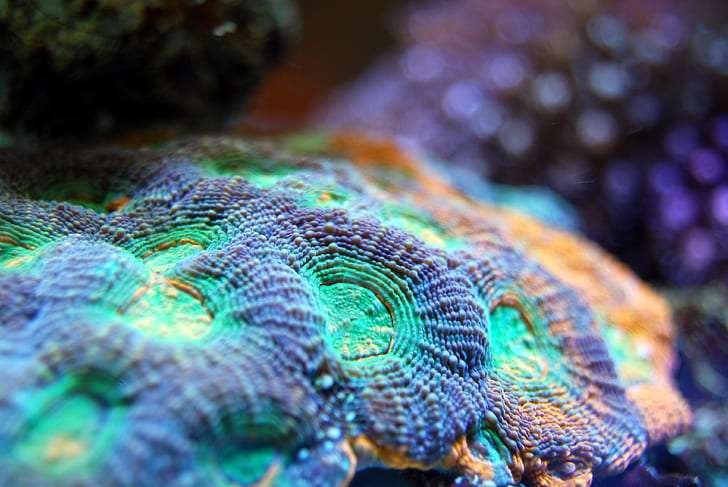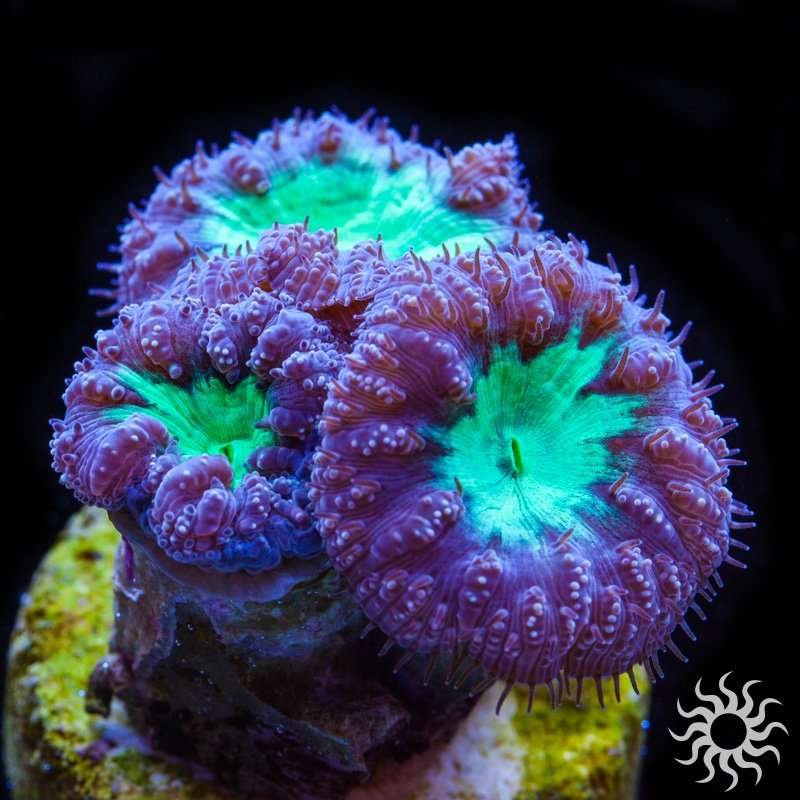ZOANTHID PALTYHOA CORAL CARE

Light
It has been found that Zoanthid and Palythoa corals do best with 150 to 200 par of light. Some say that these corals do better with low light, but we’ve seen that they do better with light that is on the higher end of normal.
Food
We haven’t seen a certain way that Zoanthid and Palythoa corals need to be fed. They get their nutrients from the sea, just like most corals, and do best when they have a lot of food.
Flow
Zoanthid and Palythoa corals do best in water that moves around a little. Their polyps aren’t too sensitive to water movement, so they do best with moderate to high indirect water flow. Getting rid of trash is important. Too much flow, especially straight flow, can hurt the coral’s tissue or make it harder for them to catch food.
DIFFICULTY
Aquaculture makes zoanthid and palythoa corals easy to find, which means that many amateurs have had long-term success with them. They can grow very quickly in the right conditions and are not as likely to get coral diseases like STN, RNT, and others. Zoanthids are soft corals that don’t have a calcium-carbonate core. This means that they don’t need to have their Calcium and Alkalinity levels constantly checked. They do well in captivity when they get the right amount of food, light, flow, and filtering, just like all other corals.
PRICE
Zoanthids and palythoas come in a lot of different types. Colors are very different and can be dull or bright. There are rainbow types with discs that are splattered or spotted. Corals like these are very popular in farming because they come in a lot of different colors and are easy to find.
ZONE OF COLLECTION: Indo-Pacific
NAME OF THE SCIENCE
Zoanthids, also known as Palythoa, are a type of cnidarian that lives in coral reefs, the deep sea, and many other places in the ocean around the world. These animals come in a lot of different colors and different ways they live together.
AGGRESSION
This kind of coral doesn’t seem to be very aggressive, but you should still give it some room to grow and stay healthy. It is important to know that these corals can sometimes carry Palytoxin poison, which is one of the world’s most deadly poisons. If it gets into the air, like when you boil rocks in a pot on the stove, it can be fatal. When you boil rocks, you should always do it outside. You could also get sick from palytoxin if you touch your eyes or mouth after handling a colony that has it without gloves.
You need to be very careful, and following simple safety rules like wearing gloves when handling and glasses when framing will keep you completely safe at all times.
TEMPERATURE IN THE NATURE
82 °F (28 °C). Most corals can adjust to temperatures between 77 and 84 degrees and still live.
A pH level between 8.0 and 8.4 is what you should aim for. Over the course of 24 hours, we usually aim for a spread of 8.2 to 8.3.
NITRATE: Try to keep the level steady and aim for a level between 5 and 10.
PS: Try to keep the level steady and aim for a range of 0.05 to 0.1.
ALKALINITY: These are soft corals, so they don’t need to eat calcium or alkalinity because they don’t have a calcium carbonate skeleton. However, we still suggest keeping the amount between 8 and 9 dKh.
CALCIUM: Similarly, these are soft corals that don’t need to eat calcium or alkalinity because they don’t make a calcium carbonate skeleton. However, we still suggest keeping the calcium level between 400 and 450.
Find Out More About Zoanthid Corals
The word “Zoanthid” refers to many different species in the family Zoanthidae. Many people who like reefs call these animals different names, like “carpet coral,” “button polyps,” and “zoas.” They are called soft corals, and keeping them healthy in saltwater tanks isn’t too hard. Zoanthids have bright colors and can grow so many that they cover rocks in tanks.
Zooanthids get their food from photosynthesis, which is done by zooxanthellae, which are photosynthetic algae that are built into their bodies. They also take plankton and other nutrients from the sea and eat them. To keep them healthy, it’s important to give them a food supplement. They can also eat meat, such as blood worms, shrimp, and krill.
These organisms make more of themselves by budding, which means that new polyps stay connected to the old ones and form colonies. Zoanthids like a stable setting with a moderate flow rate and low to moderate lighting, usually between 100 and 150 PAR. It is important not to put too many other corals close to Zoanthids because they can grow too big and cover nearby corals if they are not handled properly.
Be very careful when handling Zoanthids because some species of Palythoas, which are related to Zoanthids, have a strong poison called palytoxin. This poisonous substance can be very dangerous and even kill you if it gets into your system. Because of this, you should be careful when handling Zoanthids and Palythoas, especially if your hands or arms are hurt. Also, you should not boil tank rocks because the fumes that come out of doing so can be dangerous.


